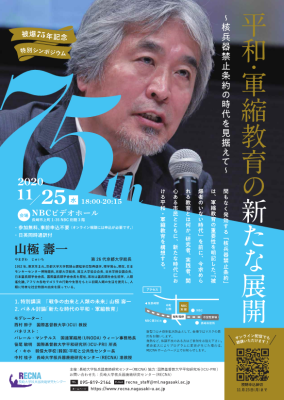It is published simultaneously by RECNA-Nagasaki University, Asia Pacific Leadership Network for Nuclear Non-proliferation and Disarmament (APLN), and Nautilus Institute and is published under a 4.0 International Creative Commons License the terms of which are found here.
U.S. Planning for Pandemics and Large-Scale Nuclear War
Lynn Eden
A Working Paper presented to
The 75th Anniversary Nagasaki Nuclear-Pandemic Nexus Scenario Project
Lynn Eden is senior research scholar (emeritus), at Stanford University. Her Ph.D. is in sociology from the University of Michigan; she works at the intersections of sociology, history, and political science. For most of her career, Eden was senior research scholar at the Center for International Security & Cooperation (CISAC) in the Freeman Spogli Institute for International Studies at Stanford University; she was also associate director for research at CISAC for many of those years. Before that, Eden taught in the history department at Carnegie Mellon University. Eden has written on how people in small communities do, or plan, harm to others. Her first book, Crisis in Watertown, was a finalist for a U.S. National Book Award. She also wrote on the 1964 Ku Klux Klan murders of civil rights workers Schwerner, Cheney, and Goodman in Philadelphia, Mississippi. Most of Eden’s work, including articles, chapters, and co-edited volumes, has been on U.S politics, nuclear arms control, and U.S. foreign and military policy. Her book Whole World on Fire: Organizations, Knowledge, and Nuclear Weapons Devastation won the American Sociological Association’s 2004 Robert K. Merton award for best book in science and technology studies. Using historical documents and personal interviews, Lynn Eden is currently writing on how organizational routines, narratives of deterrence, and jokes and humor make it possible for highly ethical U.S. military officers to revise and develop the operational war plans to “prevail” in a nuclear war.
This paper focuses on the United States and examines how developing plans to understand, prevent, prepare for, and mitigate disasters that may occur infrequently—for example, pandemics, is different from developing plans to fight and “prevail” in a large-scale nuclear war. We could say that preparing for pandemics makes sense, but that developing—and implicitly threatening to carry out—nuclear war plans only makes sense if such plans are not carried out.
Both kinds of plans involve anticipating large numbers of deaths—but at very different orders of magnitude. And, although the language of prevention and mitigation may be common to both, the probability of a pandemic depends to a considerable degree on human knowledge and social/political action. On the other hand, the reason for developing highly detailed “executable” plans to fight and “prevail” in a nuclear war is to threaten an enemy so “he” will not attack you or your allies. One cannot threaten a pandemic in hopes of deterring it from attacking. But if nuclear war plans do not deter an enemy, carrying out those plans in the hopes of destroying enemy forces will almost certainly lead to the incomprehensible destruction of all.
It is puzzling that the Trump administration did not prepare for a pandemic. It is puzzling how those who develop U.S. nuclear war plans understand what they are planning. I explore both below.
Keywords
Pandemic, scenarios, government organization, U.S. nuclear war planning, planners, outcomes, measurement, displacing emotion, humor
Full text (PDF) is here.

















